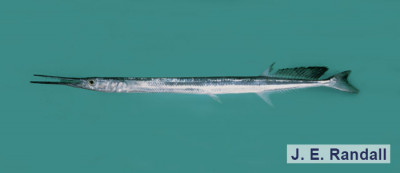Name: Hound Needlefish
Local name: Hagool
Scientific name: Tylosurus crocodilus
Classification: Class: ray-finned fishes; Order: needlefishes; Family: needlefishes (Belonidae)
Size: This species commonly attains 80 cm body length, without beak and caudal fin, and a maximum length of 135 cm.
Habitat:
The Hound Needlefish is a pelagic species found over coral assemblages in lagoons and seaward reefs, where it occurs as solitary individuals or in small groups. It feeds on fishes. It is oviparous and eggs may be found attached to objects in the water column. It is feared by fishermen because with its sharp snout it may inflict puncture wounds when jumping out of the water.
Distribution:
The nominal subspecies Tylosurus crocodilus crocodilus is widely distributed in the tropical and warm temperate Indo-West Pacific, from the Red Sea and eastern Africa to Polynesia, north to Japan, south to Australia, and in the Atlantic. Another subspecies occurs in the Eastern Pacific.
Conservation status:
In both the global, and the Arabian Gulf regional assessment of the IUCN Red List of Threatened Species it has been classified as Least Concern (LC). A prized food fish, it is caught by trolling and casting hook-and-line at the water surface, and also by purse seines and driftnets.
Description:
The body is elongate, rounded in cross section and upper and lower jaws are extremely long, forming a stout beak with very sharp teeth. There is a small, black lateral keel on either sides of caudal peduncle, and the caudal fin is deeply forked. Body coloration is dark bluish green dorsally, and silvery below. The dorsal fin is dark grey, and juveniles of less than 20 cm length have an elevated black lobe in the posterior part of the dorsal fin.








